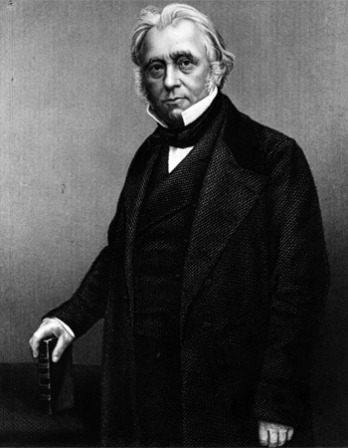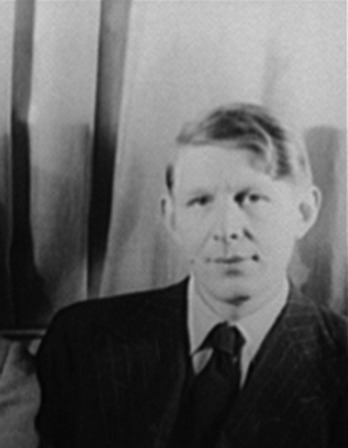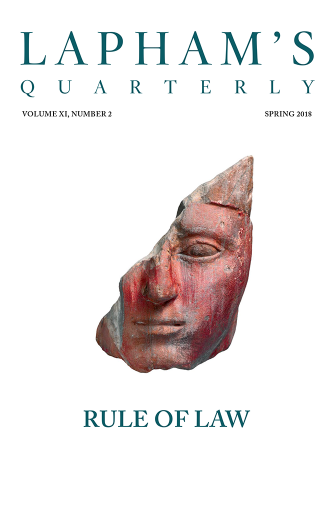I must be a mermaid, Rango. I have no fear of depths and a great fear of shallow living.
—Anaïs Nin, 1950Uncharted Waters
Jacques Cousteau goes exploring.
One morning in June, I went to the railway station at Bandol on the French Riviera and received a wooden case expressed from Paris. In it was a new and promising device, the result of years of struggle and dreams, an automatic compressed-air diving lung conceived by Émile Gagnan and myself. I rushed it to Villa Barry where my diving comrades, Philippe Tailliez and Frédéric Dumas, waited. No children ever opened a Christmas present with more excitement than ours when we unpacked the first “aqualung.” If it worked, diving could be revolutionized.
We found an assembly of three moderate-sized cylinders of compressed air, linked to an air regulator the size of an alarm clock. From the regulator there extended two tubes, joining on a mouthpiece. With this equipment harnessed to the back, a watertight glass mask over the eyes and nose, and rubber foot-fins, we intended to make unencumbered flights in the depths of the sea.
We hurried to a sheltered cove that would conceal our activity from curious bathers and Italian occupation troops. I checked the air pressure. The bottles contained air condensed to 150 times atmospheric pressure. It was difficult to contain my excitement and discuss calmly the plan of the first dive. Dumas, the best goggle diver in France, would stay onshore keeping warm and rested, ready to dive to my aid, if necessary. My wife, Simone, would swim out on the surface with a snorkel breathing tube and watch me through her submerged mask. If she signaled anything had gone wrong, Dumas could dive to me in seconds. “Didi,” as he was known on the Riviera, could skin-dive to sixty feet.
My friends harnessed the three-cylinder block on my back with the regulator riding at the nape of my neck and the hoses looped over my head. I spat on the inside of my shatterproof glass mask and rinsed it in the surf, so that mist would not form inside. I molded the soft rubber flanges of the mask tightly over forehead and cheekbones. I fitted the mouthpiece under my lips and gripped the nodules between my teeth. A vent the size of a paper clip was to pass my inhalations and exhalations beneath the sea. Staggering under the fifty-pound apparatus, I walked with a Charlie Chaplin waddle into the sea.
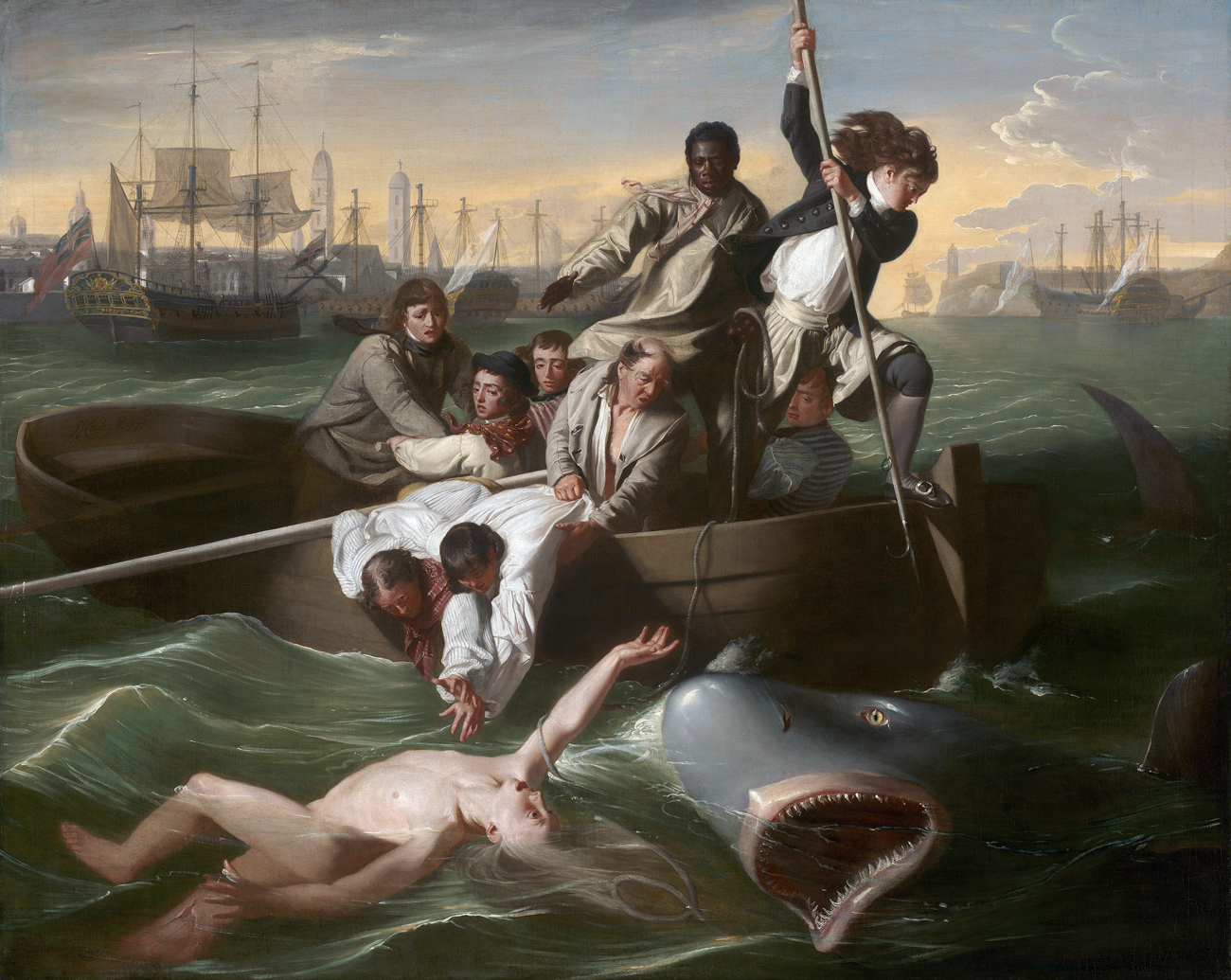
Watson and the Shark, by John Singleton Copley, 1778. National Gallery of Art, Washington D.C.
The diving lung was designed to be slightly buoyant. I reclined in the chilly water to estimate my compliance with Archimedes’ principle that a solid body immersed in liquid is buoyed up by a force equal to the weight of the liquid displaced. Dumas justified Archimedes by attaching seven pounds of lead to my belt. I sank gently to the sand. I breathed sweet effortless air. There was a faint whistle when I inhaled and a light rippling sound of bubbles when I breathed out. The regulator was adjusting pressure precisely to my needs.
I looked into the sea with the same sense of trespass that I have felt on every dive. A modest canyon opened below, full of dark-green weeds, black sea urchins, and small flowerlike white algae. Fingerlings browsed in the scene. The sand sloped down into a clear-blue infinity. The sun struck so brightly I had to squint. My arms hanging at my sides, I kicked the fins languidly and traveled down, gaining speed, watching the beach reeling past. I stopped kicking, and the momentum carried me on a fabulous glide. When I stopped, I slowly emptied my lungs and held my breath. The diminished volume of my body decreased the lifting force of water, and I sank dreamily down. I inhaled a great chestful and retained it. I rose toward the surface.
My human lungs had a new role to play, that of a sensitive ballasting system. I took normal breaths in a slow rhythm, bowed my head, and swam smoothly down to thirty feet. I felt no increasing water pressure, which at that depth is twice that of the surface. The aqualung automatically fed me increased compressed air to meet the new pressure layer. Through the fragile human lung linings this counterpressure was being transmitted to the bloodstream and instantly spread throughout the incompressible body. My brain received no subjective news of the pressure. I was at ease, except for a pain in the middle ear and sinus cavities. I swallowed as one does in a landing airplane to open my Eustachian tubes and healed the pain. (I did not wear earplugs, a dangerous practice when underwater. Earplugs would have trapped a pocket of air between them and the eardrums. Pressure building up in the Eustachian tubes would have forced my eardrums outward, eventually to the bursting point.)
I reached the bottom in a state of transport. A school of silvery bream, round and flat as saucers, swam in a rocky chaos. I looked up and saw the surface shining like a defective mirror. In the center of the looking glass was the trim silhouette of Simone, reduced to a doll.
I waved. The doll waved at me.
I became fascinated with my exhalations. The bubbles swelled on the way up through lighter pressure layers, but were peculiarly flattened like mushroom caps by their eager push against the medium. I conceived the importance bubbles were to have for us in the dives to come. As long as air boiled on the surface all was well below. If the bubbles disappeared there would be anxiety, emergency measures, despair. They roared out of the regulator and kept me company. I felt less alone.
I swam across the rocks and compared myself favorably with the bream. To swim fishlike, horizontally, was the logical method in a medium eight hundred times denser than air. To halt and hang attached to nothing, no lines or air pipe to the surface, was a dream. At night I had often had visions of flying by extending my arms as wings. Now I flew without wings. (Since that first aqualung flight, I have never had a dream of flying.) From this day forward we would swim across miles of country no man had known, free and level, with our flesh feeling what the fish scales know.
I experimented with all possible maneuvers of the aqualung—loops, somersaults, and barrel rolls. I stood upside down on one finger and burst out laughing, a shrill distorted laugh. Nothing I did altered the automatic rhythm of air. Delivered from gravity and buoyancy I flew around in space.
I could attain almost two knots’ speed, without using my arms. I soared vertically and passed my own bubbles. I went down to sixty feet. We had been there many times without breathing aids, but we did not know what happened below that boundary. How far could we go with this strange device?
Fifteen minutes had passed since I left the little cove. The regulator lisped in a steady cadence in the ten-fathom layer, and I could spend an hour there on my air supply. I determined to stay as long as I could stand the chill. Here were tantalizing crevices we had been obliged to pass fleetingly before. I swam inch by inch into a dark narrow tunnel, scraping my chest on the floor and ringing the air tanks on the ceiling. In such situations a man is of two minds. One urges him on toward mystery, and the other reminds him that he is a creature with good sense that can keep him alive, if he will use it. I bounced against the ceiling. I’d used one-third of my air and was getting lighter. My brain complained that this foolishness might sever my air hoses. I turned over and hung on my back.
The roof of the cave was thronged with lobsters. They stood there like great flies on a ceiling. Their heads and antennas were pointed toward the cave entrance. I breathed lesser lungfuls to keep my chest from touching them. Above water was occupied, ill-fed France. I thought of the hundreds of calories a diver loses in cold water. I selected a pair of one-pound lobsters and carefully plucked them from the roof, without touching their stinging spines. I carried them toward the surface.
Simone had been floating, watching my bubbles wherever I went. She swam down toward me. I handed her the lobsters and went down again as she surfaced. She came up under a rock which bore a torpid Provencal citizen with a fishing pole. He saw a blond girl emerge from the combers with lobsters wriggling in her hands. She said, “Could you please watch these for me?” and put them on the rock. The fisherman dropped his pole.
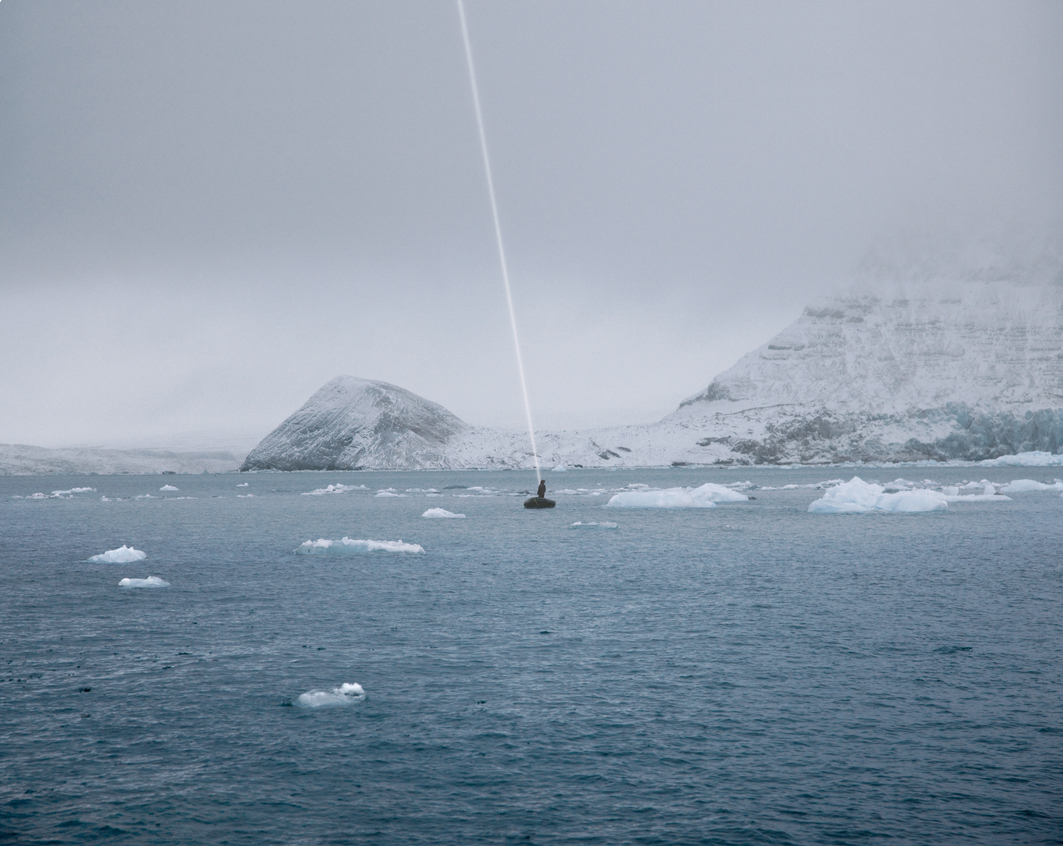
Higgs Ocean #8, by Andrea Galvani, 2010. C-print mounted on aluminum dibond, 37.43" x 47.28". © Andrea Galvani, courtesy of the artist, Artericambi, Italy and Marso, Mexico City.
Simone made five more surface dives to take lobsters from me and carry them to the rock. I surfaced in the cove, out of the fisherman’s sight. Simone claimed her lobster swarm. She said, “Keep one for yourself, monsieur. They are very easy to catch if you do as I did.”
Lunching on the treasures of the dive, Tailliez and Dumas questioned me on every detail. We reveled in plans for the aqualung. Tailliez penciled the tablecloth and announced that each yard of depth we claimed in the sea would open to mankind three hundred thousand cubic kilometers of living space. Tailliez, Dumas, and I had come a long way together. We had been eight years in the sea as goggle divers. Our new key to the hidden world promised wonders.

Jacques Cousteau
From The Silent World. The apparatus was the first fully automatic compressed-air aqualung. A gunnery officer in the navy at the start of World War II, Cousteau made his first underwater film, Sixty Feet Down, in 1942 and was active in the French Resistance, later receiving the Legion of Honor. Having converted a minesweeper into a research vessel called the Calypso in 1950, Cousteau, with Frédéric Dumas, published The Silent World in 1952, winning an Academy Award five years later for a documentary of the same name. He died at the age of eighty-seven in 1997.
